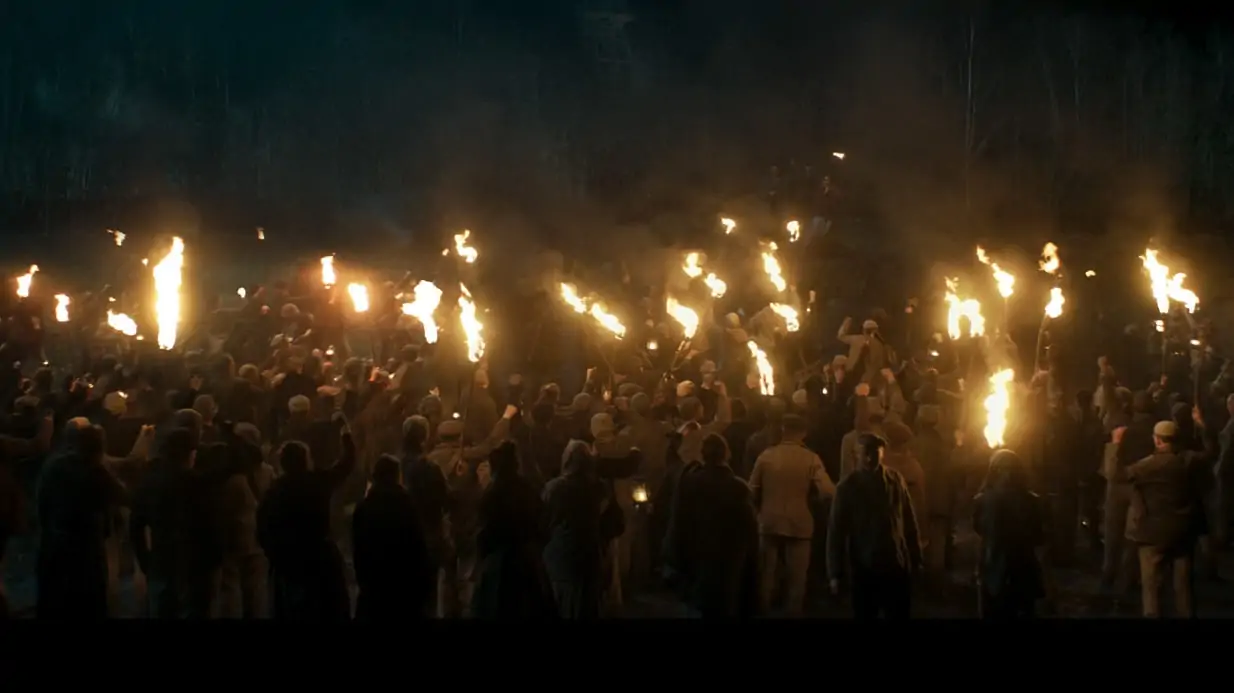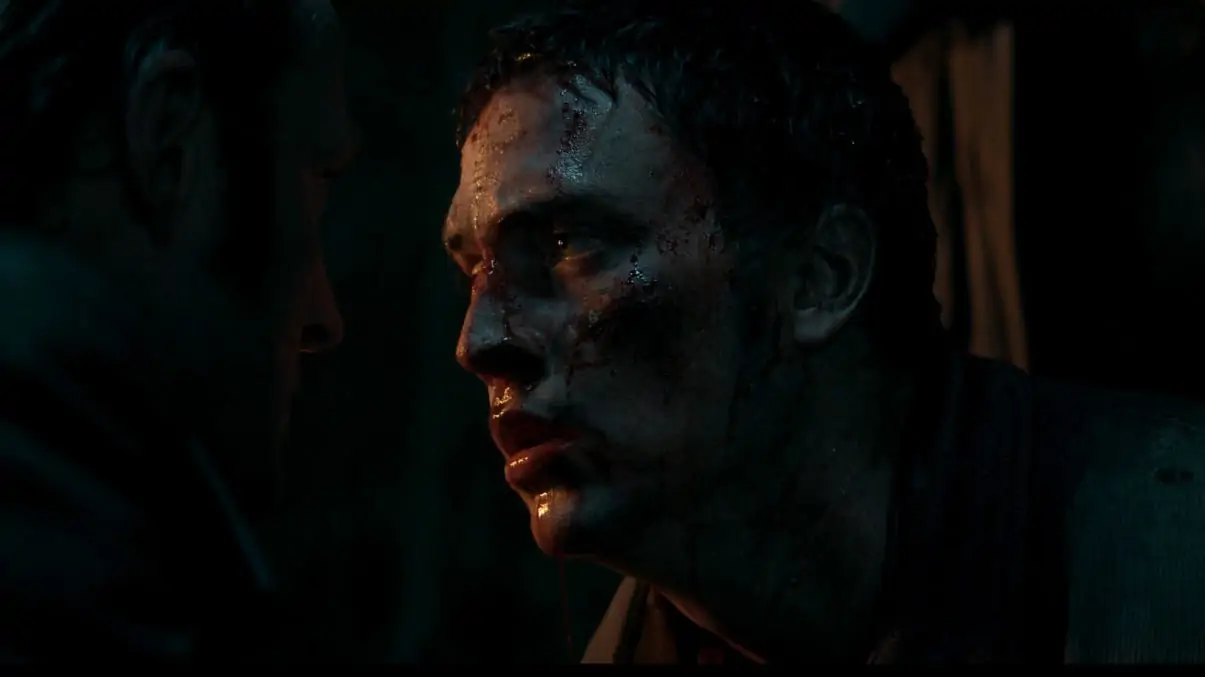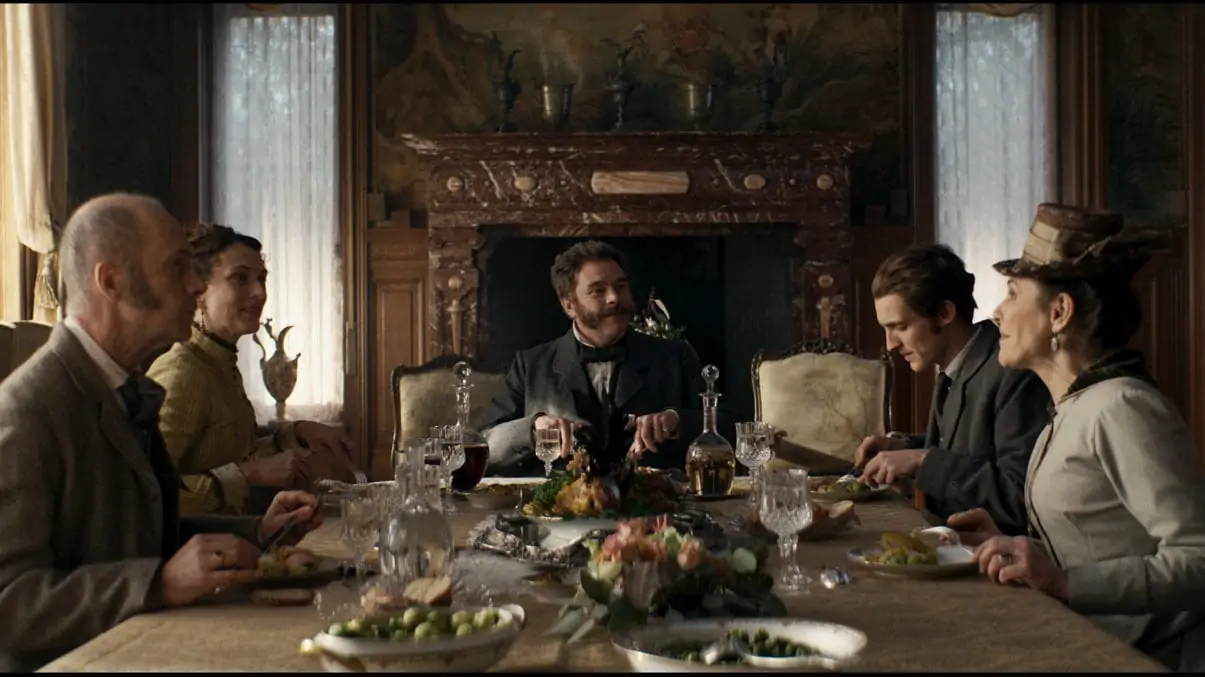TAKING ACTION
Cinematographer Xavier Dolléans reveals how he approached lensing a modern adaptation of Émile Zola’s classic novel about class struggles and the coalminers’ strike in northern France in the 1860s.
“French novelist Émile Zola was a master of description, so his book – and Julien Lilti’s script – which our production is based on is abundant with detail; from atmosphere, smells and colour through to textures and lighting,” says cinematographer Xavier Dolléans about his central source of inspiration while shooting six-part historical series Germinal. “He is so precise in his explanation of the emotions you can feel when experiencing light – a red flame dancing in a fireplace could fill a page.”
Subscribe to our mailing list to continue reading
Germinal follows Étienne Lantier, a young migrant miner working in the north of France who spearheads a strike over poor working conditions and meagre wages. The production is one of many Dolléans has crafted alongside director David Hourrègue which includes six series of Skam France (2018-20) and two seasons of Cut (2017-18).


“On this occasion we were working with a €12 million budget, so it was a really big project for us,” says Dolléans. “It was also a sizeable challenge and responsibility to bring the Germinal universe to life on screen because productions based on the book have already been made such as Yves Allégret’s 1963 film and Claude Berri’s 1993 movie.”
Preparation for the cinematographer’s landmark series began in January 2020. Dolléans and Hourrègue investigated the techniques needed to build an authentic world, examined how visual effects could enhance the production and created a 100-page mood board to share with VFX, broadcaster France Télévisions and the crew. The treasure trove of ideas and references contained stills from modern Westerns such as The Assassination of Jesse James (2007) which influenced the series’ dark and high contrast home interior sequences; French artist Pierre Soulages’ work; the amplified realism of period dramas such as Peaky Blinders; and Sebastião Salgado’s black-and-white photographs depicting mines in Brazil.
“As the series would revolve around the bleak mines and miners’ coal-covered faces, we collected references demonstrating colours emerging from the blacks. It was important to capture this darkness but with a slight tint appearing. Soulages’ work showcased the reflection, feeling of colour and variation in the black you can achieve from the coal or the miners’ faces,” says Dolléans.


The cinematographer also found the contrast in Salgado’s shots powerful. The Kodak TRI X 320 film he used in the ‘80s and ‘90s is not available today and the formula changed in 2007, resulting in less silver in the film. However, Dolléans bought expired film from before this date, added one stop of exposure per decade the film had been expired and shot reference material with his Pentacon Six TL medium-format camera and Sony Venice in parallel.
“Colourist Karim El Katari and colour scientist Florine Bel referred to this material when creating a LUT with the contrast of the Kodak TRI X 320 film and based on the results of the specific lab printing process Salgado used. I asked for more green to be added into shadows and Karim advised adding a gold tint into highlights to enhance the fire effects. I also asked for skin tones to be as natural as possible. To achieve the best colour workflow, this LUT was created in the ACES colour space and converted to a Rec. 709 LUT for on set monitoring.”
Establishing this distinctive look early meant fewer adjustments were required in the grade. “Karim resolved lighting consistency issues experienced due to the rapidly changing light in northern France between October and December. He also assisted with colour matching, although this was simplified by not using the basic s709 LUT and having the contrast and look already set.”


The series’ look was also determined by production designer Isabelle Quillart, who embraced the challenge of creating a period feel by introducing textures and colour to the sets. Most of the series was captured in France’s northern regions of Lille and Valenciennes between October 2020 and February 2021 and required sizeable mine sets to be constructed. “When the 1993 film was shot, some mines and equipment were available, but we had to reconstruct all mine interiors and the lifts in Arenberg Creative Mine studio which ironically was a mine 30 years ago. We used the outside of the building for exterior sequences and also used their two fully equipped 500-square metre stages.
“We had difficulties finding a street to double up as 19th century France which we could shoot in for a month, so we filmed all the scenes in the miners’ houses at Fort Seclin, a military fort near Lille, and modified some sequences using visual effects.”
Emerging from the darkness
Hourrègue and Dolléans storyboarded key sequences for the visual effects team and described the mining universe they wanted to create in detail, complete with dramatic skies. “I learned so much about visual effects including the trick of replacing a crane and lighting fixtures with the moon in the night sky. I also discovered some elements, such as smoke, are often advisable to as a live base, if possible, and then enhance in post.”
Dolléans wanted to introduce big smoky shafts of light in the mine interiors, to convey the miners’ experience as they emerge from the darkness when “the light almost hurts their eyes.” Reference material included Westerns Heaven’s Gate (1980) and Open Range (2003) which, like Germinal, uses light to define changes in seasons.


Precise shafts of light in the mines and miners’ houses were created with 10K tungsten or 12KW HMI Mole Beams and Dedolight DPB70s, pairing the “punchy” DPB70 source with mirrors to underline the seasons. Airstar lighting balloons were also valuable for Dolléans and gaffer Joachim Imbard. They used a large Agigliht crane equipped with six 12KW HMI Fresnel Prolight remote heads as well as a 4.8K HMI lighting balloon to illuminate a 600-metre-wide area of forest, buildings and the mines.
Although the book explores working class struggles in 1860s France and the uprising against the bourgeoisie middle-class establishment, Germinal the series moves the action to 1890 because the available mine sets were more accurate for this date. To distinguish between the more static bourgeois world and the miners’ world depicted, more vibrant colours and large windows were incorporated in the Downton Abbey-inspired bourgeois sequences. “Lighting faces is as important as lighting places, so in every scene featuring people I light their faces in a way that is relevant to the story as well as sensitive to the actors.”

Several scenes in episode six needed to be filmed under water, introducing Dolléans to a new production process. Initially he considered shooting these in a swimming pool in France, but it became clear this would not be suitable.
“Lites Studios in Belgium has one of the most advanced underwater stages in the industry. It was the perfect solution, partly due to the facility’s movable floor which we used extensively for sequences of the mines during different stages of flooding,” he says.
Working in tight collaboration with Lites Studios owner and underwater camera operator Wim Michiels SBC and his wife underwater stunt coordinator Karen Wesenberg, all required shots were achieved, easily immersing the set and raising it back up in a few minutes to adjust the depth of water.
“We first decided which parts of the mine would be created on a dry stage in France, and which would be submerged in water and would need to be hardwearing and constructed in iron. Our production was the first with a completely sealed roof and such small spaces shot on the underwater stage, so we also determined how best to light the scenes.”


Dolléans, gaffer Imbard and production designer Quillart determined whether oil, candle or electrical light was best to create authentic candlelight and a period feel in the miners’ lamps. He recorded the spectrum of oiled miner lamps using a Sekonic spectrometer and then mimicked its colour quality using 2600K LiteRibbon and a Lite Gear fire effects dimmer. “We decided this was the best option due to the required lighting level – anamorphic T2.8 and high-speed work. We added ¼ CTO (206) on top of the ribbon for warmth, wrapped the ribbon in a circular shape at the centre of the lamp and added a slight diffusion with 252 Lee filters on the glass so the bright LED artefacts were not visible in the anamorphic flares.
“Our incredible props builder Quentin Guiot incorporated the dimmer, LED, and batteries into an existing miner lamp. To ensure it was waterproof we put all the electronic parts inside a condom and used a special underwater gel to allow access to the dimmer underwater.”
As a one metre squared soft box that could be submerged in water did not exist, Dolléans and Imbard put eight Astera tubes in HydroFlex housing which sat inside an Aladdin Fabric Lite structure. “Wim had many underwater PAR 64 fixtures, so I changed my original lighting plan for the dry mine scenes and lit those with PAR 64 to maintain a consistent look. To replicate a China ball light under water, we placed the Litegear Lite Ribbon and dimmer in the miner’s lamp inside a waterproof plastic ball, customised by Quentin.”
A shared creative vision
Dolléans and Hourrègue agreed an aspect ratio of 2.40:1 would best suit the vast and ambitious nature of the modern retelling “despite 2.40 rarely being used for French TV shows”. Attention then turned to whether anamorphic lenses should be used. “We didn’t want to use zoom lenses, so I tested around 20 prime, anamorphic, spherical, and full frame options,” Dolléans says.
“Our final choice – two full sets of Atlas Orion anamorphic lenses – was a wise one visually and economically for the five-month shoot. Between T2.0 and T2.8 they are very soft but between T2.8 and T4.0 they become sharper, and still with some nice character. So, I shot almost everything at T2.8-1/2 because that was the sweet spot for me.”


The decision to return to the Sony Venice – which Dolléans shot the series Mental and season three to six of Skam France – was partly based on the results of ISO tests. “Germinal features many fire effects, so we shot a candle with different camera brands. The Venice’s dual ISO and the colour in the lower part of the curve stood out. David was also keen to shoot many night-time slow-motion scenes which the sensitivity of the Venice was invaluable for.”
Dolléans also used the Blackmagic Ursa Mini Pro 12K to shoot some establishing shots and visual effects plates. “Shooting at 12K resolution was fantastic and the camera was also perfect for capturing vertical fire shots for the visual effects team to use as reference.”
Working with a director such as Hourrègue who strives to “capture the emotion” in a scene was a delight for Dolléans. “Sometimes when David suggested using Steadicam, after the first take he would ask me to go handheld and move closer to be with the actor and their feelings,” he says.
“David often wanted to transition from extreme wide shots to tight close-ups. It was an interesting approach when framing shots in the mine, helping convey the feeling of oppression. A wonderful camera crew helped me accomplish this including my tremendous B camera/Steadicam operator Guillaume Quilichini; my long-time 1st AC A camera Anaïs Andreassian and 1st AC B camera Jodie Arnoux who were incredible at focus pulling during this fast-paced shoot; 2nd AC Amélie Gastaldi; and camera assistant Bérénice Brochard. I also have to thank my gaffer Joachim for his perfect eye, and my key grip for years Thomas Gros for helping me perfect my framing take after take.”
Dolléans considers the world of Germinal they captured as one of his “most visually exciting” productions, and he revelled in being transported back to the 19th century throughout the 80-day shoot. “I was grateful for the crew and equipment available. This series allowed me to refine processes I used on lower budget productions and to work closely with talented and creative individuals in all departments such as costume designer Thierry Delettre who brought textures and colours into the costumes which looked incredible on screen. It was all about developing the overall look together as a team and sharing the creative vision as widely and clearly as possible.”










